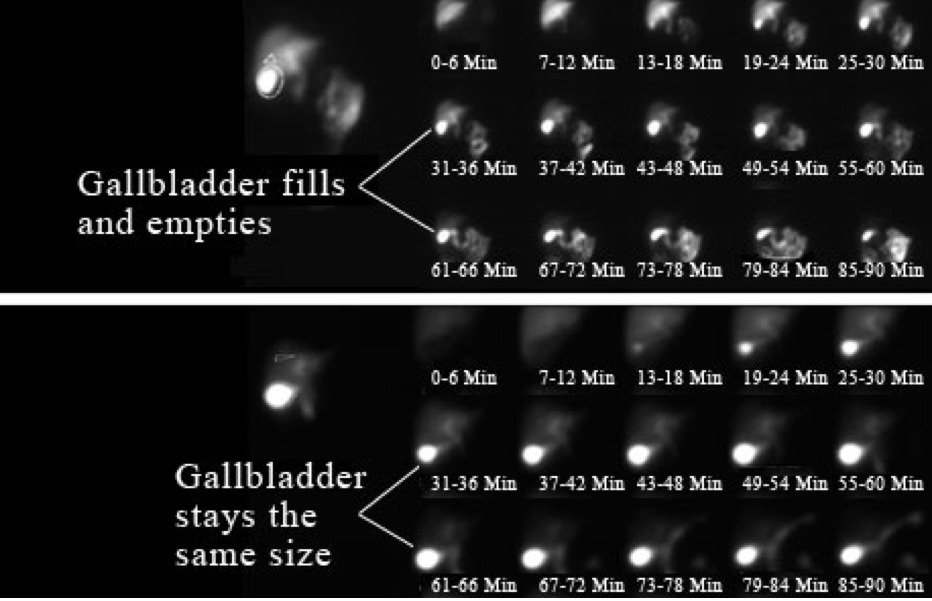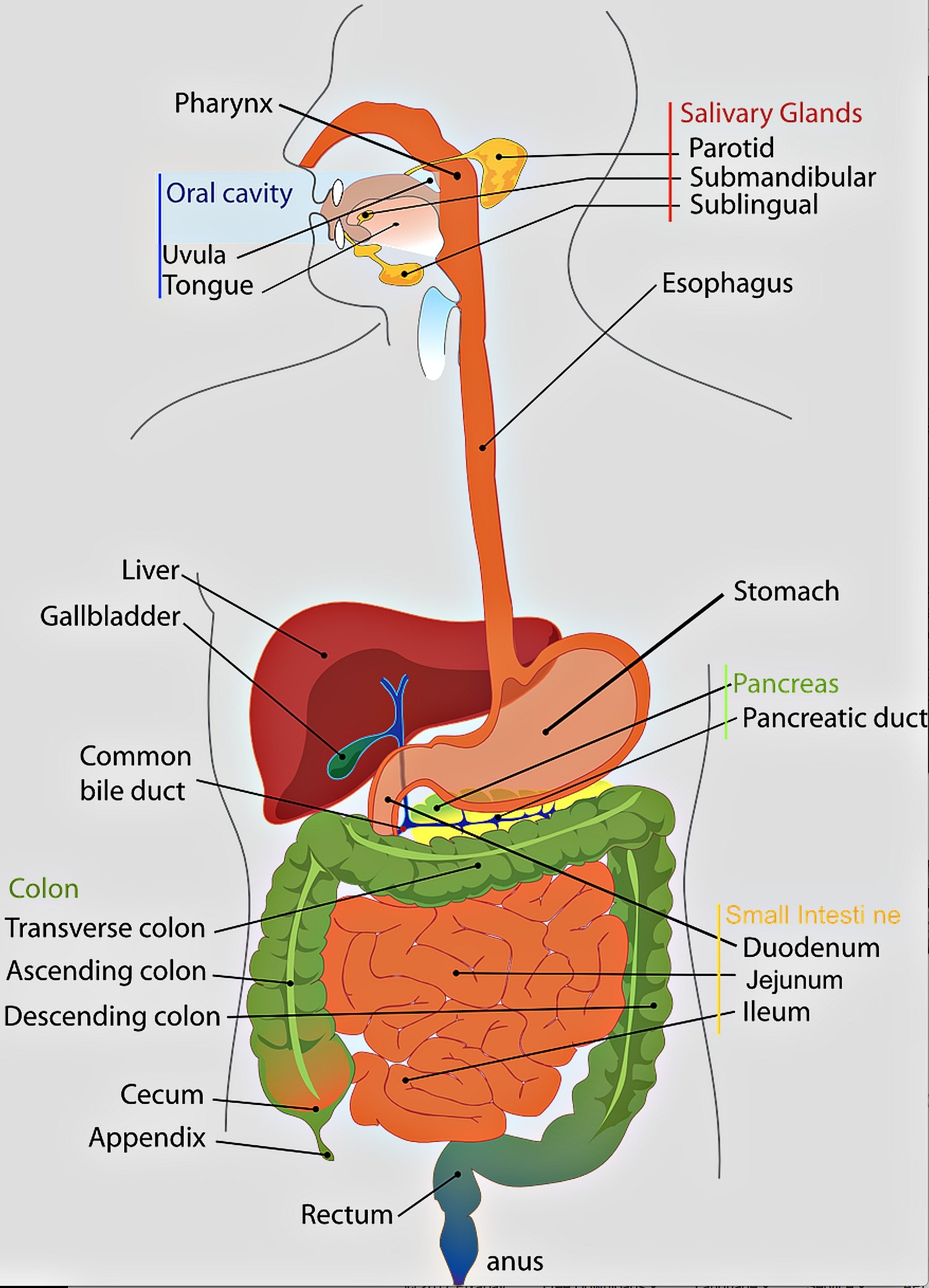HIDA Scan
What Is A HIDA Scan, What It Is Used For, Preparations You Need And What To Expect Before And After Doing The Test.
What is a Hida Scan?

A HIDA scan is an acronym which stands for Hepatobiliary Iminodiacetic Acid scan, is one of several tests known as cholescintigraphy.
During the HIDA scan, a radioactive tracing material is injected into the your blood through a vein in your arm or forearm, and it travels through the circulation until it comes to the liver. The liver contains ducts for the biliary system, the system that takes the bile salts that are excreted by the liver and transports them to the gallbladder where they are stored.
The material injected into the vein is called technetium 99 hepatolite or hydroxyl imino diacetic acid (HIDA).
A special camera is then used take radioactive images of the liver, gallbladder and connecting ducts.
A HIDA scan is used to reveal any functional and structural abnormality of the biliary system.
The Biliary System

The biliary system is one of the body’s systems that is composed of the organs and ducts that produce, store and transport bile.
It is made up of the liver, the bile ducts and the gallbladder. The channels inside the liver that transport bile also forms part of this system.
Bile is a dark green or yellow brown fluid that is produced by the liver, and which helps in the digestion of lipids, or fats, when they reach the small intestine.
After bile is produced in the liver, it is secreted by the liver cells, called “hepatocytes,” into a system of ducts that flow from the liver through two larger ducts, called the “hepatic ducts.”
These two ducts join to form the common hepatic duct, which is connected to a duct from another organ, the gallbladder. That duct is called the cystic duct. The cystic duct and the common hepatic duct form the common bile duct, which carries bile from the liver to the first part of the small intestine, called the “duodenum.”
The gallbladder is a small hollow pear-shaped organ found under the liver just at the level your right breast.
It is where bile from the liver is stored before it is released into the small intestine.
During the HIDA scan, the radioactive tracer flows through the liver and is added to the bile before it goes to the gallbladder. Eventually, the gallbladder releases the bile, with the radioactive tracer, into the beginning of the small intestine. A special camera then takes pictures of the radioactive tracer as it travels through the liver, bile ducts, gallbladder, and small intestine.
Why Would My Doctor Order a HIDA Test or Scan?
A HIDA scan can be requested for one of several reasons. It is a highly specialised test not easily available in many places. It is often only requested when other tests are not conclusive in help with a diagnosis of right upper abdominal pain or where specific problem in the liver and or gallbladder is suspected.
The following are the most common reasons why your doctor would order a HIDA or hepatobiliary scan:
- If you have pain in that part of your abdomen, then your doctor will want to see if the symptoms you are experiencing are the result of a problem with your biliary system, particularly with one of the ducts or with the gallbladder.
- If your gallbladder may not be functioning properly, the HIDA scan will allow your doctor to see where the problem lies.
- Jaundice, or a yellow discoloration of the whites of the eyes and of the skin, is caused by excess amounts of bilirubin, which is the result of your red blood cells naturally breaking down. Normally, the liver gets rid of the bilirubin in bile. Sometimes jaundice is caused by a disease that is destroying your red blood cells too quickly. At other times, however, jaundice is caused by problems in the liver that keep the bilirubin from being excreted with bile. These problems can include hepatitis, which is an inflammation of the liver, or blockage of the bile ducts. A HIDA scan can help your doctor determine if your jaundice is a result of a liver or bile duct problem. Jaundice can make you have symptoms like dark colored urine, light or clay colored stool, and itching.
- If you have had surgery in the area of the bile duct and your doctor is concerned that the bile duct may have been injured, a HIDA scan will allow him to see if anything is leaking.
- Hida or hepatobiliary scan is often requested to make a diagnosis of biliary atresia or hepatitis in the newborn.
What Should I expect When I Have a HIDA Scan?
Your HIDA scan will be done in a section of the hospital or clinical called “nuclear medicine” department.
- When you arrive in nuclear medicine, you will have to undress, but can probably keep on your underwear, and the technician will give you a cloth or gown to wear during the test.
- The technician will explain to you what needs to be done and request your written consent and have some forms filled out if not already done.
- He or she will then clean the area on your arm where the radioactive tracer will be injected into your blood vein.
- A small injection of tracer will be injected into you.
- While you are lying on your back on a table, a large camera will be positioned very close to your abdomen and it will be scanning your body for the radiation that is released by the tracer.
- As the tracer travels through the circulation to the liver, gallbladder, and small intestine, multiple pictures will be taken for up to 90 minutes.
- Each picture or video scan is very brief, but you will need to be very still so the pictures are clear. There is no radiation emitted by the camera during the HIDA scan.
- A radiologist will usually interpret the pictures taken by the camera.
Cholecystokinin
- Sometimes, a substance called cholecystokinin, which stimulates the gallbladder to contract, may be injected into your vein during the HIDA scan. Another picture will be taken which will help the radiologist or nuclear medicine specialist determine if your gallbladder function is normal. The technician may ask you some questions about how your feel after the cholecystokinin is injected.
Morphine
- Sometimes morphine is injected into the vein during a HIDA scan to see if there is inflammation of the gallbladder.
What will I feel during the HIDA Gallbladder scan?
- Many people feel nothing at all when the tracer is injected into the vein.
- Other people feel a sting or a pinch from the needle.
- After that, you may become a little uncomfortable because you are being asked to be still and to remain on a hard table for 90 minutes and possible 120 minutes.
- You can ask the technician for a blanket or a pillow to help make your comfortable.
If you are already having pain in your abdomen as the reason for the scan, you may become more uncomfortable. Cholecystokinin may also cause some pain in the right upper part of your abdomen. It may cause nausea. Tell the technician if you feel ill.
How Do I Prepare for a HIDA Scan?
Doing a gallbladder radionuclide scan is easy. The following are simple preparations you can make before your HIDA or gallbladder nuclear scan:
- You should tell your doctor if you are pregnant or if you are breastfeeding
- Also be sure to let your doctor know if you have had another x-ray test using barium or have taken medicines like Pepto-Bismol, which contain bismuth. Bismuth and barium may interfere with the results of the HIDA scan.
- If you are pregnant, you should not have the test.
- If you are breastfeeding, you should discard your breast milk for 24 to 48 hours after the scan, until all the radioactive material is eliminated from your system.
- Do not eat or drink for up to 4 to 12 hours before the gallbladder scan, or according to your specific doctor’s instructions.
What Are The Risks of the HIDA Scan?
Hida or cholescintigraphy is a relatively safe procedure. The following are the risks associated with doing this test:
- Radiation risk. True, radiation always carries some risk of damage to the cells or tissue, even at a very low level. But the amount you get from an HIDA scan is very very small. It is enough though to be avoided if you are pregnant.
- The other risk is that you might have an allergic reaction, but that is rare.
- You may have soreness at the spot of the injection, and even a little swelling in some cases. If you do experience this, use a warm compress on your arm.
- Finally, so that other people around you do not come into contact with radioactive tracer, flush the toilet after using it, because that is how the tracer is eliminated from your body.
- Wash your hands thoroughly.
What Can I Expect From the Results of the HIDA Scan?
About two days after you have your test, the report will be complete and you should expect to receive a call from your doctor to discuss it.
- If the test is normal, the radioactive tracer traveled easily through the liver into the gallbladder and the beginning of the small intestine. Your gallbladder will appeared normal in its size, shape, and location.
- If your test if abnormal, then the tracer may not have been removed from your circulation by the liver, which could mean that you may have damage to your liver.
- If the tracer did not show up in the gallbladder, it may mean that the duct was narrowed or blocked by a gallstone or by some inflammation.
- If the tracer does not reach the beginning of the small intestine, there may be blockage of another bile duct by a stone, or it might be compressed by a tumor.
- Inflammation of the pancreas can also block the duct to the small intestine.
- Your gallbladder function may have been abnormal, with no contraction of the gallbladder, or if the gallbladder did not empty correctly.
- There may be a problem with your gallbladder if you had pain when the tracer was emptied from the gallbladder.
References:
- Fischbach FT, Dunning MB III, eds. (2009). Manual of Laboratory and Diagnostic Tests, 8th ed. Philadelphia: Lippincott Williams and Wilkins.
- Pagana KD, Pagana TJ (2010). Mosby’s Manual of Diagnostic and Laboratory Tests, 4th ed. St. Louis: Mosby Elsevier
- HIDA or Cholescintigraphy. Https://www.uptodate.com/



